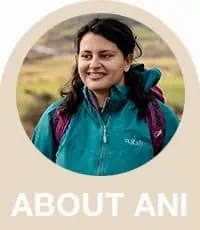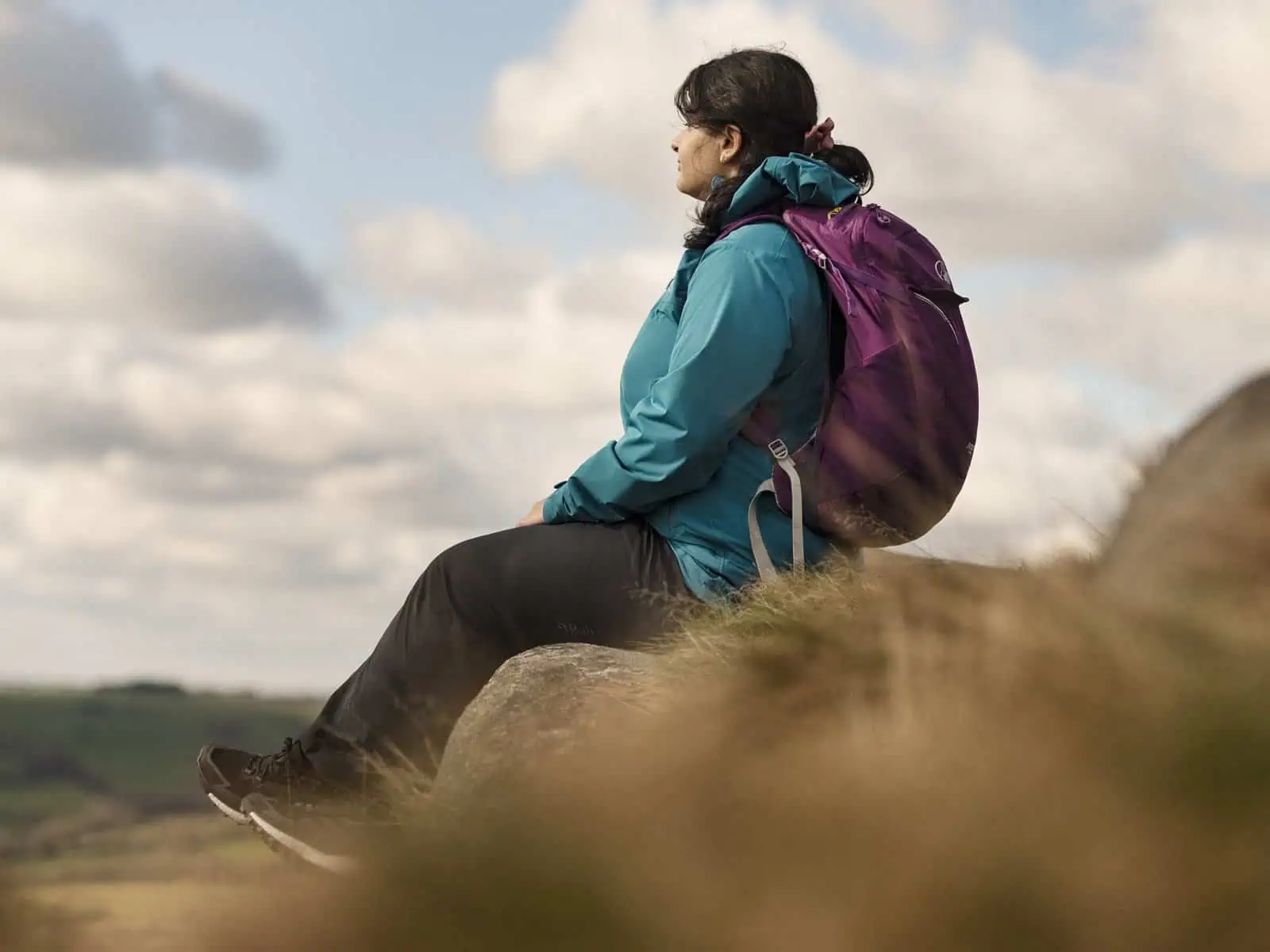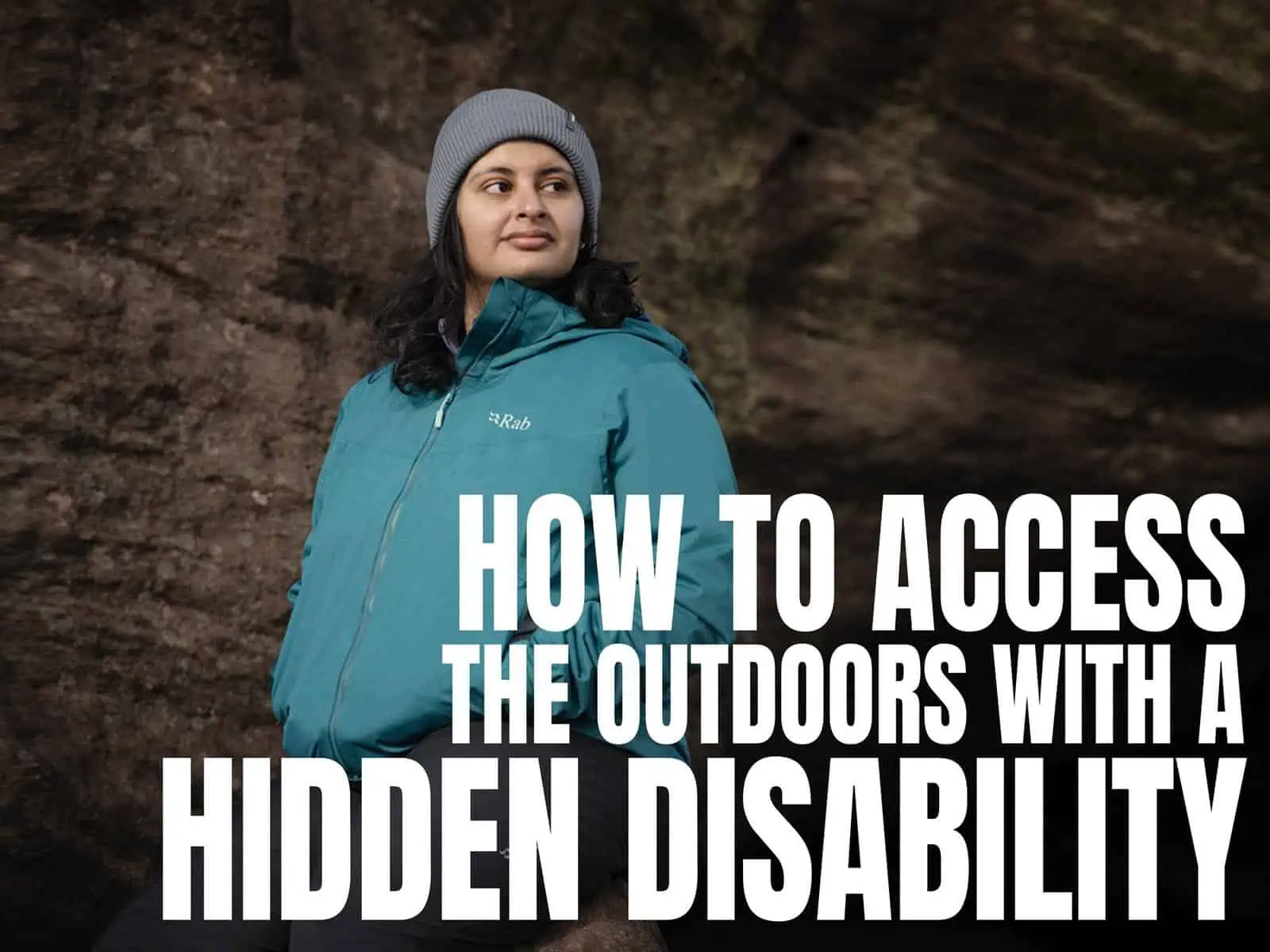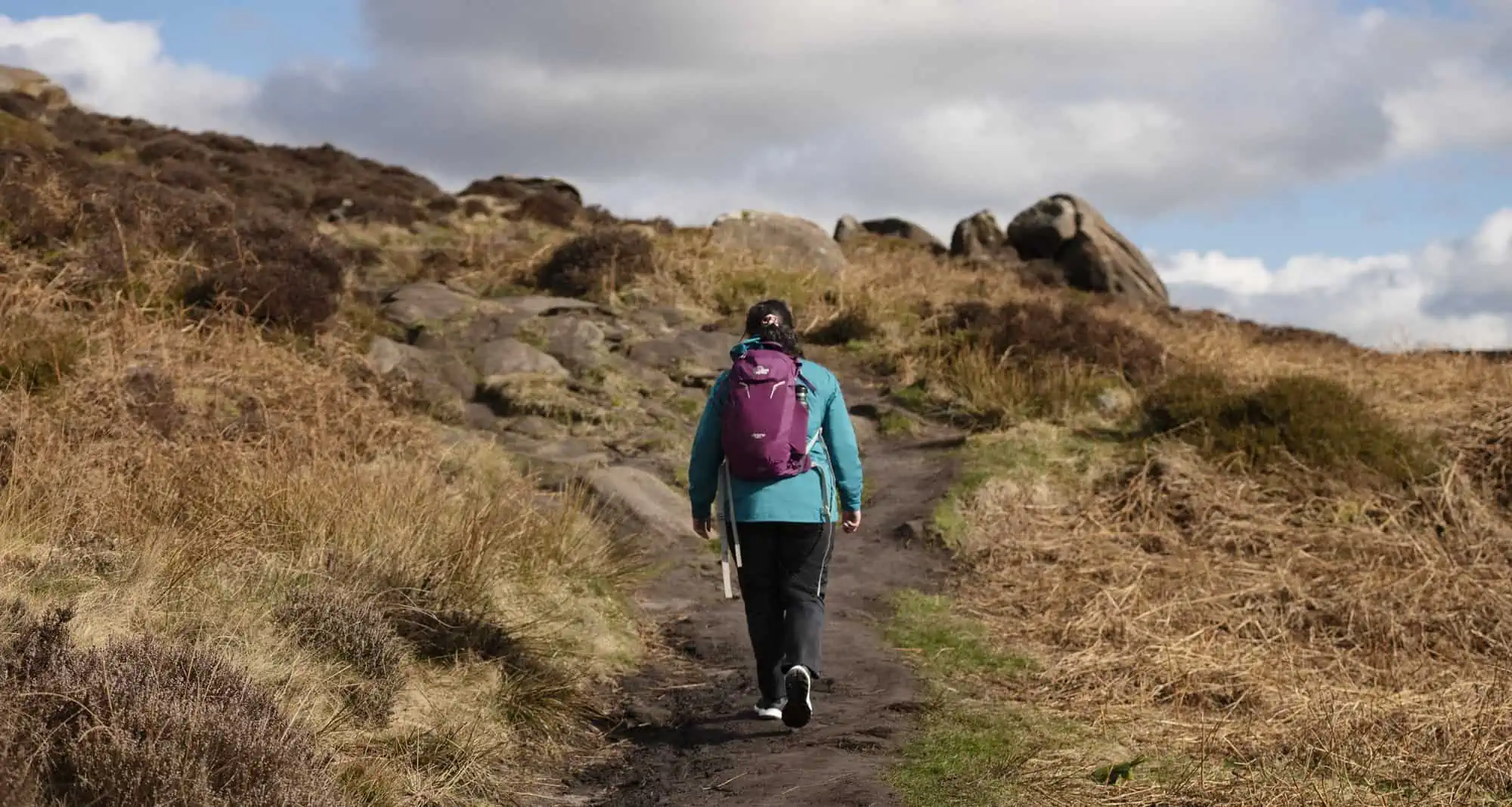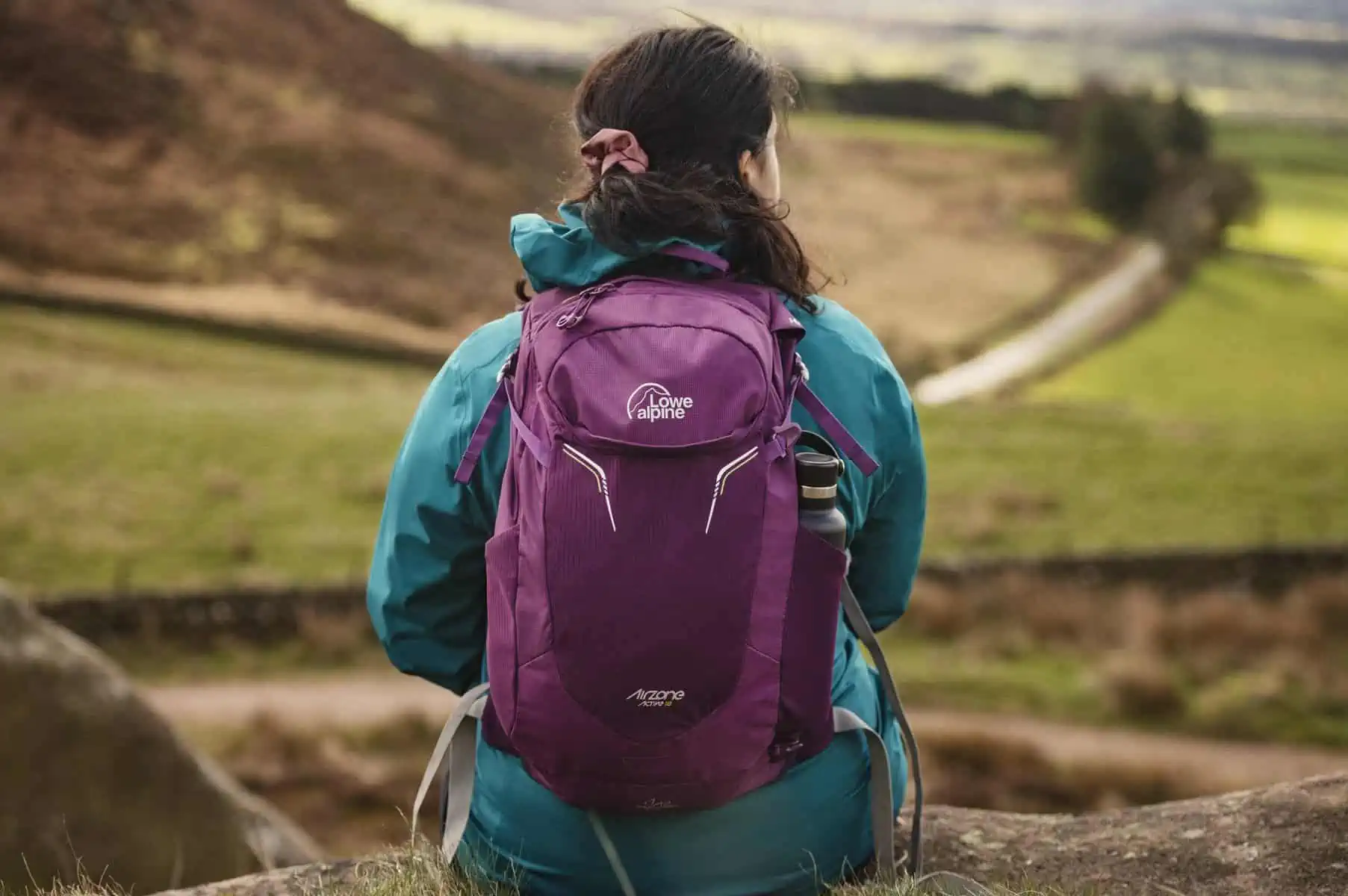In collaboration with Ani Barber, a disabled outdoors enthusiast and founder of Outside Our Way.
About the ‘Explore What’s Possible’ Guide
What does Explore What’s Possible mean? Simply put, it’s about being more mindful of our own and others abilities and possibilities in the outdoors. It’s about reframing and shifting the narrative around our own and others experiences and working to accept all outdoors experiences as valid. In order to move towards a more accessible outdoors, disabled people, chronically ill people and people with access needs have the same rights as everybody else to explore what is possible for them in the outdoors, without judgement or barrier.
Shifting and changing the narrative of what our experiences can and should look like will have an incredible impact all round. It will remove a lot of pressure from the time we spend outdoors to have to always be about achievements. It may well allow us to connect better to the spaces around us for our own sense of satisfaction and wellbeing. For disabled folks, this can help significantly with being able to access nature in the first place, feeling valid and exploring what’s possible in the outdoors in an individual and adaptive way. Exploring What’s Possible is about exploring what feels unique to us in the outdoors and being accepting of a whole range of different outdoors experiences, not just our own.
Why is This Important?
Regardless of who you are, access to the outdoors and time spent in nature should not be full of barriers – but right now it is, for a whole range of reasons. Nature is simply good for us – the benefits of spending time outdoors is well recorded and spending time outdoors has been found to help with mental health problems like anxiety and depression. Indeed, in the UK, the NHS has acknowledged the importance of the role of nature in treatment, care and rehabilitation by making Green Social Prescribing part of its Long Term Plan. This means that healthcare professionals can refer patients to groups or organisations that will engage them in outdoor activity as part of their treatment. This is a fantastic acknowledgment of the therapeutic role nature can play, but despite this, there is often still a certain perceived notion of what an outdoors experience should look like – and quite frankly this can be very off-putting and even cause significant barriers for several reasons. Stereotypes, preconceptions, and extreme-sport focused views of the outdoors all have a role to play here and these assumptions of what an outdoors experience ‘should’ be can easily prevent people from getting out into nature themselves. They might feel they are not fit enough; That they don’t have the right gear; That what they’re doing won’t be ‘epic’ enough and so on.
“At the start, I felt like my adventures weren’t interesting enough or “proper adventures” because I wasn’t doing thirteen miles to tick off three trig points. I found it really hard to keep up with non-disabled hikers. I was holding myself to their standards and failing. After pushing myself one step too far I had a massive flare up, which forced me to revaluate how I went outdoors.””
— ANI BARBER
When Ani was twelve, she was diagnosed with Lupus, Fibromyalgia and Hyper-mobility Spectrum Disorder. Ani started hiking around 2019 and quickly became hooked, but she found it difficult to keep up with non-disabled hikers and quickly discovered that pushing herself too hard could lead to flare-ups in her symptoms. She has subsequently adapted the way she spends time in the outdoors to better suit her needs and has also discovered other outdoor activities such as SUP boarding and wild swimming. Ani is the founder of Outside Our Way, a blog that shares the stories of disabled and chronically ill folk in the outdoor landscape. Ani also hosts a Disability Campaigners Social with All The Elements.
EXPLORE WHAT’S POSSIBLE FOR YOU
Getting outdoors and being in nature can be fantastic for your mental health. However, if you have a hidden disability, it can be hard to know your limits. Especially with conditions where the goal posts can move during flare ups. Join Ani as she shares her top tips to help you access nature and the outdoors with a hidden disability.
Wherever you’re coming to this from, whether you’re non-disabled, disabled experiencing access issues for any number of reasons, your outdoors experiences should be valid. Remember that your abilities right now are not a given long term – there could come a time when you face issues and barriers to the outdoors yourself. Better access and adapting how we think about and interact with the outdoors isn’t an issue that just affects some, it’s an issue that affects us all. So, changing the narrative on what an outdoors experience should look like and understanding the issues that many people face in accessing the outdoors can have a massively positive impact in creating a more accessible outdoors for all.
Understanding the Current Landscape: What are some of the problems that people with access issues face to getting out in nature?
This is of course heavily dependent on experience, and are not limited to these:
- Being reliant on someone else’s schedule to get outdoors, especially if you don’t have access to a car or driving isn’t possible
- Finding and being comfortable with someone who has a good understanding of your health and needed to my health and needs.
- Being unable to participate in group hikes or events. “I can’t just join a group hike to go with other people. I’ve never felt comfortable joining group hikes because they can go quite fast, the distances are often quite far, and if I have to stop and sit every 10 minutes or turn back, that will be quite disruptive.” says Ani.
- Finances and the cost of getting outside.
- Knowledge of how to access the outdoors with particular disabilities. “In my opinion you only really find the information on things like Trampers, paraclimbing, or any form of adaptive adventure if you’re already in the outdoor space. It took me 4 years until I found out you can hire Tramper Mobility Scooters from a couple of places in the Peak District National Park for example, and that’s because I stumbled on them accidentally by speaking to someone in a gift shop!”.
- Lack of independence and choice. From the lack and maintenance of accessible trails to the lack of choice to participate in events.
- Being singled out and separated from others. “We should be seeing disabled/chronically ill people included in activities with non-disabled folk, rather than having them isolated and separated into their own groups. For example, having adaptive riders actually ride with other riders, or having outdoor climbing activities have facilities and adjustments in place for paraclimbers to participate with everyone else.” says Ani.
- Accessibility is often seen as an afterthought, which makes things much harder to adapt and change.
- Often requires a lot more research, money being spent and emotional labour to access the outdoors as a disabled person, whilst still coming across barriers and not being able to partake fully. “These are basic things like actual disabled access on campsites; Having gates wide enough for adaptive equipment rather than stiles or kissing gates; quiet and sensory rooms being included in outdoor events; or having outdoor leaders be appropriately trained to work with folks with a variety of disabilities and being able to apply that to their group courses.” says Ani.
- Hate speech, disrespect, condescension, exclusion and use of ableist language and ideals by other outdoors users.
“Representation needs to be there for all forms of disability and chronic illness, and not just the people climbing amazing heights and doing huge expeditions that would feel unachievable to many who don’t have the sponsorships and money. We need to see more people having everyday adventures in their adaptive ways, and normalising disabled and chronically ill people having adaptive adventures without it being an inspiration for non-disabled folk. ”
— ANI BARBER
What Could a More Accessible Outdoors Look Like?
- Does not require extra effort, research and money for someone with access issues to get outside – better and easier to access information about renting adaptive equipment, accessible trails, facilities etc.
- Publishing or sharing greater information on trails – such as elevation gain, distance, potential obstacles such as stiles along the route. Not referring to activities as easy, medium or difficult as this is a personal thing and is often judged on your individual experience and circumstances.
- Disabled and chronically ill people being a part of the planning processes of events or changes to the outdoors from the beginning. Accessibility is often currently an after thought, which makes things harder to adapt and change. Listen to disabled people and their access needs. Create space for disabled folks to have open and frank conversations about their needs. This can lead to adjustments that can easily be made by group organisers or friends that can make a huge difference for disabled folks. This doesn’t need to be made emotional or a big thing, it can be as simple as how you would give someone instructions on how to find a start of a trail.
- Checking in on people’s needs whilst outdoors, not putting pressure on or using phrases like ‘you’ll be ok’. For example, having various different length routes that can be adapted to someone’s needs depending on how they might change, without judgement.
- Better access in the outdoors from a land planning and management perspective: for example gates wide enough for adaptive equipment, more accessible paths and trails.
- Participation being possible in mixed events and disabled and chronically ill folks not being singled out.
- If you are running or organising an event, consider why disabled and chronically ill folks may not be attending.
- A shift in perspective and better understanding of ableism (you can read more about how ableism takes effect here) and the things that you may often take for granted.
- Greater independence and choice in the outdoor community to everyone. Being able to have more options on where to go outdoors, with the confidence that everyone else has.
- Setting your own achievements and goals in the outdoors based on your own limits. You can make your outdoors experience into whatever you want it to be.
- A move away from toxic language that is shrouded with toxic positivity – such as ‘mind over matter’, ‘push your limits’ etc.
How Can we Enact Change to Make the Outdoors More Accessible?
The Explore What’s Possible Guide Action Points:
Be Mindful
Understanding how the world around us is stacked towards ableism can help you have a better understanding of the barriers that people may face. However, conversations around access do not need to be reserved for if you’re spending time outdoors with people with access issues only. Start to normalize conversations with anyone you’re spending time outdoors with about what is involved in what you plan to do, or what you and the other person might want out of an outdoors experience without judgement. It’s important to work towards understanding how saying something is ‘easy’, ‘hard, or ‘short’ as examples is a personal thing too and can be different from person to person. Instead, make it a conversation about what is involved in a factual way – if you know the trail well, talk about the length, elevation gain, steepness etc. as facts rather than opinion. This can help to radically change the experience of the people around you.
Change the Narrative and Challenge Preconceptions
Work on changing your perspective on outdoors experiences, this can actually benefit you as well as people with different needs to yourself. There are certain notions around how outdoors experiences should look, and how it should be that actually anything that isn’t that can feel like it isn’t valid as an ‘adventure’, ‘hike’ or anything else. Breaking down and understanding that there is no right or wrong way to experience the outdoors can help you have a better understanding of the different needs of those around you. It can also help you to be less judgmental towards your own adventures, your own time outdoors, be safer and inclusive.
Be Compassionate and Respect Boundaries
Remember that one person’s boundaries or ‘limits’ may not be the same as the next person. There is also a good chance that limits can very much be a different, moving target, and a moving target throughout time outdoors. Reducing language like ‘we’ll just do this instead’ or ‘easier’ can help people to feel more validated and included in what they can do. It’s also important to educate yourself around how one approach that has worked for one person may not work for another. For example, something that may seem like a simple fix could actually be very harmful for another. There’s often a notion that increasing physical activity, for example, can improve stamina or the ability to explore the outdoors, however for many people with disabilities or chronic illnesses for example, this type of training or attitude can actually create debilitating flare ups. Make yourself approachable too – many people will not share their access issues because of a fear of being judged or being seen as ‘difficult’. If someone feels that they can openly share their needs with you, just like giving instructions to a location, a better dialogue can be had which will lead to a better outdoors experience all round.
Perceptions about what the outdoors and outdoors experiences mean to different people are absolutely changing. We have moved on from a prescriptive model of what an outdoors person should look like, how they should act and what they should do in the outdoors to something that’s more inclusive. However, there’s still a lot of room for improvement. Disabled people are still under-represented in the outdoors and there are still entrenched views of the outdoors experience. There are still many barriers – both physical and conceptual standing in the way of the aspiring disabled outdoorsperson. Attitudes have and continue to change – which is a great thing – and we can hope that as the conversation expands, factors such as accessibility policy and easier access to facilities and mobility aids will keep pace too.
WANT TO LEARN MORE? VISIT THE MAIN ACCESSIBLE OUTDOORS GUIDE HUB:


